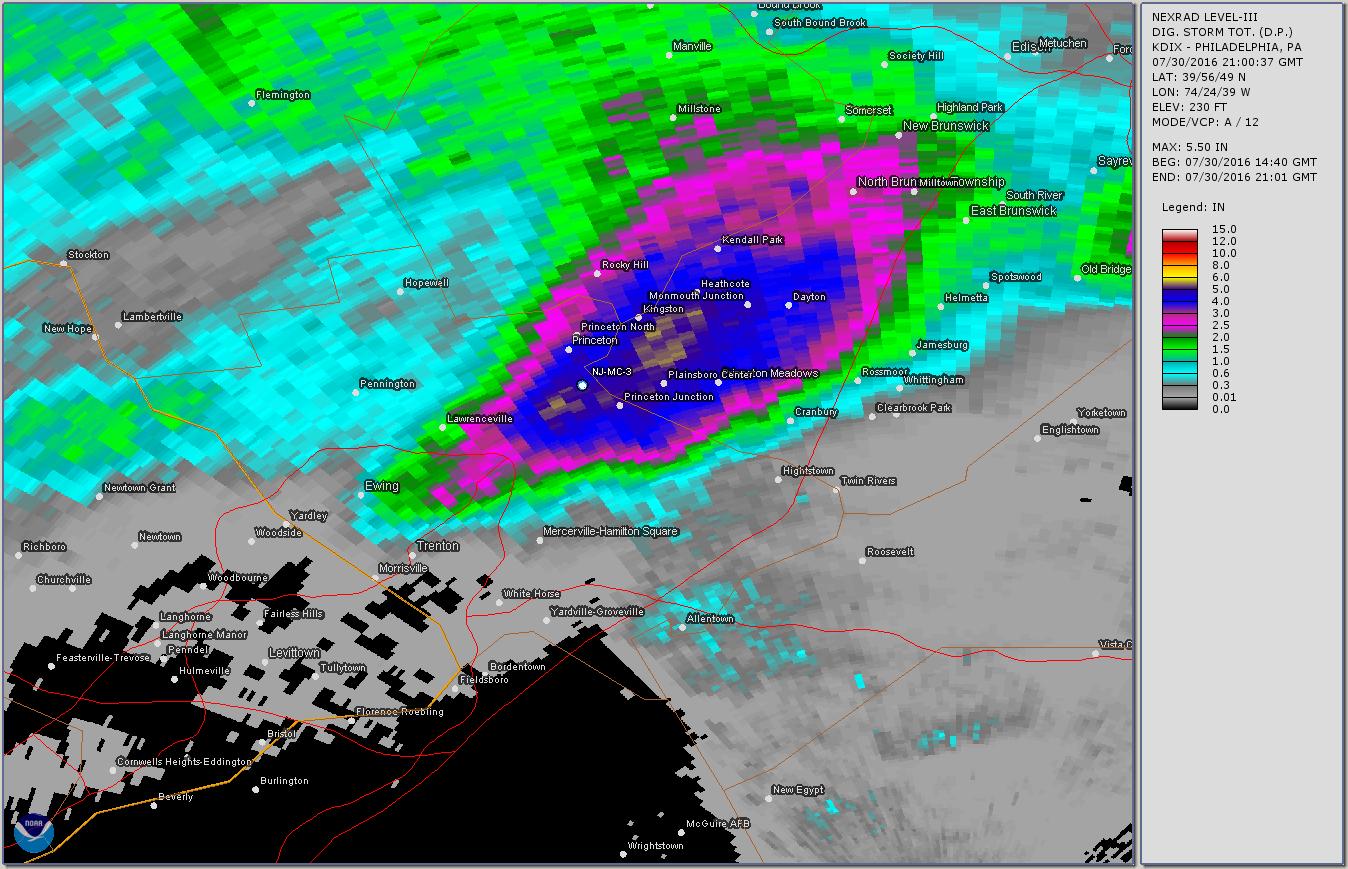
Changes in frequencies are then translated, by computer, into velocities, which are sometimes simply called "Doppler velocities." I should note, however, that Doppler radars can only "see" two directions of motion - toward the radar (inbound) and away from the radar (outbound). Conversely, microwaves back-scattering off raindrops that are moving away from the radar return at a lower frequency. In terms of radar, microwaves back-scattering off raindrops moving toward the radar return at a higher frequency, and the faster the speed of the raindrops, the higher the frequency of the reflecting microwaves. In a nutshell, the frequency of microwaves back-scattered from a radar target changes if the target is moving. Radar guns used by police to catch speeders operate in the same way. The change in frequency of the returning signal after it bounces off a thrown baseball is quickly translated into a velocity. Baseball scouts rely on the Doppler effect when they point radar guns at the fastballs hurled by prospective pitchers. The Doppler effect also applies to pulses of microwaves transmitted by radars. It is important that you do not liken the change in pitch (a change in the frequency of sound waves) to a change in loudness, which is how most people erroneously perceive the Doppler effect. Listen to the change in the horn's pitch as the minivan moves toward the camera and then away from the camera.
#Radarscope estimated rainfall driver
For example, check out this short video of a driver sounding the horn on a minivan traveling 45-50 miles per hour past a stationary camera. You may be most familiar with the Doppler effect as it relates to moving automobiles or trains. The change in frequency of a wave when either the source or an observer moves became known as the Doppler effect, and Doppler's work paved the way for the modern network of NEXRAD Doppler radars.

As the train passed the station, there was a noticeable difference in the frequency of the notes - essentially proving Doppler's hypothesis.

He instructed both groups of musicians to hold the same note (we assume that they all had perfect pitch). He tested his hypothesis in 1845, when he employed two groups of trumpeters to participate in an experiment: One group rode in an open, moving train car while the other group prepared to play at a train station. In 1842, he wrote a landmark paper, in which he explained that an observer's perception of the change in the frequency of starlight was a result of the relative motion between the observer and the star (or stars).ĭoppler broadened the scope of his hypothesis to include sound, suggesting that the pitch of a sound (frequency of the sound waves) would change when the source of the sound was moving. Johann Christian Doppler was an Austrian mathematician who applied his expertise to astronomy.


 0 kommentar(er)
0 kommentar(er)
